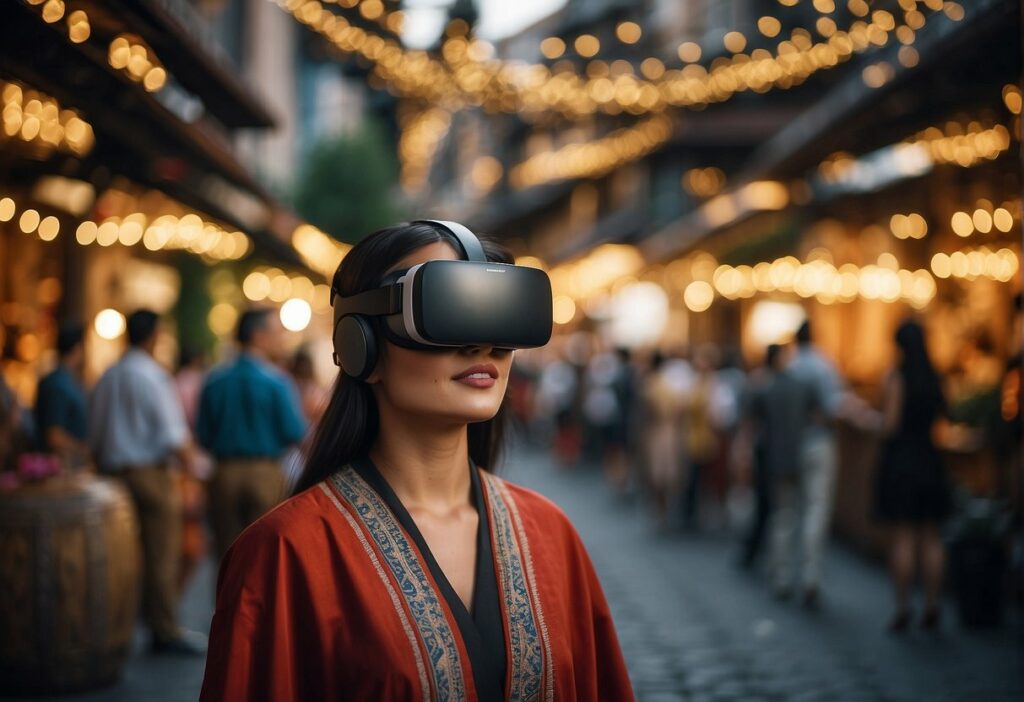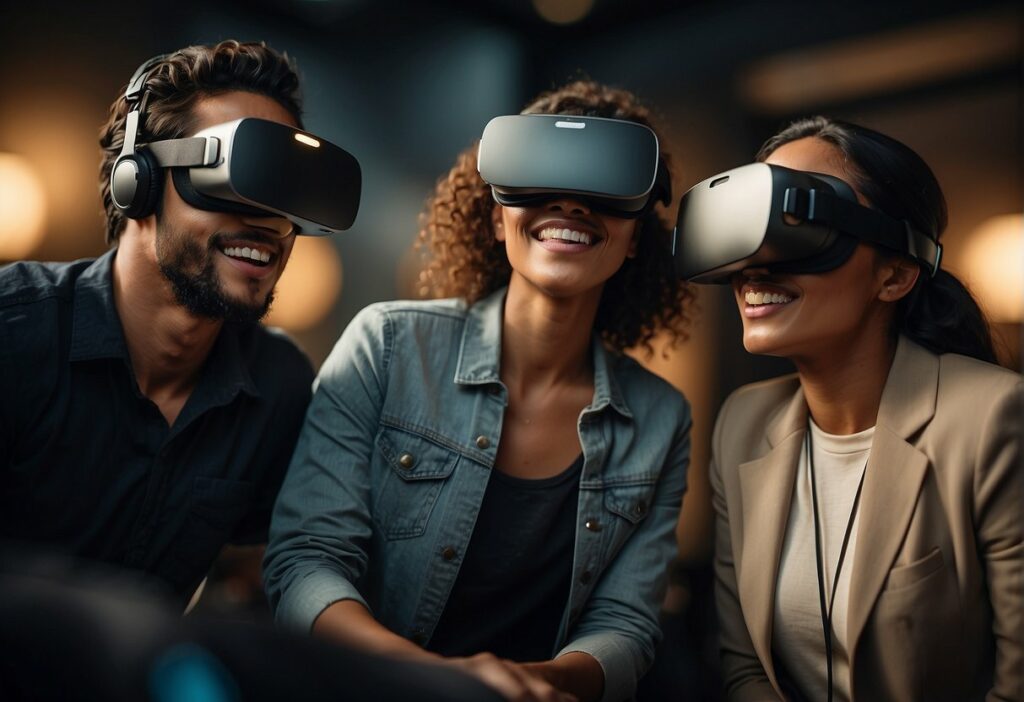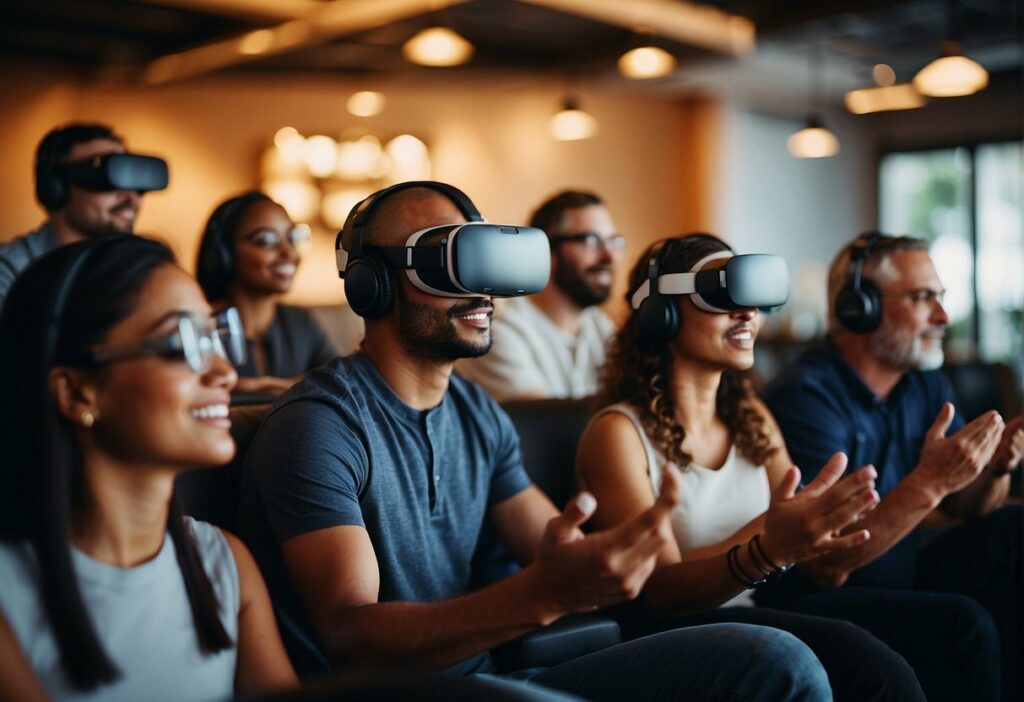Bridging Cultural Gaps: VR Experiences Enhancing Global Empathy and Understanding

Cultural gaps present a complex challenge in an increasingly globalized world, where interactions across borders are routine. Traditionally, fostering understanding and empathy among disparate cultures has relied on education, travel, and interpersonal exchange.
However, Virtual Reality (VR) technology has emerged as a powerful tool in this space, offering immersive experiences that can transport individuals to different parts of the world without leaving their homes. VR has the potential to expand the reach of cultural education, making it accessible to a broader audience.
The value of VR as a medium for cultural empathy lies in its capacity to evoke visceral, emotional responses to simulated environments. When designed with sensitivity and accuracy, VR experiences can challenge preconceptions and biases, promoting a nuanced appreciation of cultural diversity. As this technology becomes more widespread, it holds the promise of enhancing global empathy, contributing to more harmonious international relations and cooperation.
The Power of VR in Cultural Understanding

Virtual reality (VR) has become a transformative tool for cultural education, allowing users to experience and empathize with cultures around the world.
Immersive Experiences and Empathy
Through immersive experiences, VR facilitates a deep emotional connection with different cultural realities. Individuals have the opportunity to “walk in someone else’s shoes,” engaging with environments that are culturally distinct from their own. For example, VR experiences can transport users to a street festival in Brazil or a traditional wedding in India, enabling them to observe and interact with customs and social cues in a lifelike setting.
Virtual Reality as a Tool for Education
In the realm of education, virtual reality serves as a powerful medium for imparting cultural knowledge. Schools and institutions utilize VR programs to bring historical events to life, granting students the chance to witness significant moments first-hand. Textbook examples include virtual tours of ancient Egyptian pyramids or reenactments of historical speeches, where intricate details about attire, architecture, and language enrich the learning experience.
Designing VR Experiences for Cultural Education

Designing virtual reality (VR) experiences for cultural education requires a thoughtful approach to storytelling, interactivity, and representation. These experiences must respect cultural nuances while effectively engaging the user.
Storytelling Techniques
Narratives within VR experiences are crafted to immerse users in culturally rich environments. They may employ first-person perspectives to create a strong sense of presence and empathy. Linear storytelling can guide users through historical events, while branching narratives offer choices that can lead to a variety of cultural insights. Visual and auditory cues anchor the narrative in its cultural context.
Interactive Elements
Interactivity in VR is key to fostering a deeper understanding of culture. Users might engage with virtual objects, like artifacts or traditional tools, to learn about their cultural significance.
Language learning could be facilitated through dialogue simulations with native speakers. Role-playing scenarios can enable users to experience cultural practices and social interactions, strengthening the educational impact.
Authenticity and Representation
Authenticity ensures that cultural depictions are accurate and respectful. VR experiences should be developed in consultation with cultural experts and community members.
Photorealistic graphics and high-quality sound recordings of natural environments and languages enhance realism. It is essential that diverse cultural groups are depicted with dignity, avoiding stereotypes and biases. Cultural narratives should reflect the complexity and richness of the societies they represent.
Case Studies in VR Cultural Bridging

Virtual reality (VR) has become a tool for not just entertainment, but for fostering understanding and empathy between cultures across the globe. Below are specific cases that illustrate how VR has been successfully applied to cultural bridging and the valuable lessons these projects teach.
Successful Global VR Projects
- Project Empathy’s ‘The Displaced’: This VR experience takes viewers into the lives of refugees. Users can visit a Syrian refugee camp or observe the journey of a Central American child seeking asylum, gaining firsthand insight into these individuals’ experiences.
- The Machine to be Another: Developed by BeAnotherLab, this VR experience allows users to experience life from the perspective of someone from a different gender, race, or social status. It has facilitated powerful conversations regarding identity and prejudice.
Lessons Learned
- Cultural Sensitivity is Key: Projects like Clouds Over Sidra, which immersively depicts a day in the life of a 12-year-old Syrian girl in a refugee camp, show the importance of respectful representation in creating genuine empathy.
- Accessibility Broadens Impact: Ensuring that VR experiences are available in multiple languages and adapting them for various VR platforms have been crucial for reaching a wider audience, thus maximizing their cultural bridging potential.
Challenges and Ethical Considerations

When implementing VR experiences to bridge cultural gaps, developers and users must navigate various challenges and ethical considerations. These encompass concerns about privacy, respect for cultural diversity, and ensuring equitable access to technology.
Privacy and Data Security
VR platforms collect and process substantial amounts of personal data to create immersive experiences. It is crucial to maintain user privacy and ensure robust data security measures are in place to protect sensitive information. Failure to do so may lead to:
- Unauthorized data access
- Data breaches that compromise user identities
Cultural Sensitivities
To foster global empathy, VR content must be developed with a deep understanding of cultural nuances. Misrepresentation or cultural insensitivities can result in:
- Perpetuating stereotypes
- Offending targeted cultural groups
Technological Accessibility
Access to VR technology is not evenly distributed globally. To avoid exacerbating social inequities, creators must consider:
- Economic disparities affecting technology availability
- Variations in internet access and quality worldwide
The Future of VR in Global Empathy

Virtual Reality (VR) is poised to transform the landscape of international relations by enhancing empathy across cultural divides. As we progress, technological advancements, policy initiatives, and user engagement will significantly shape this burgeoning field.
Emerging Technologies
Technological Innovation: Key players are developing advanced VR platforms with heightened realism. Innovations include:
- Haptic feedback suits: These allow users to experience physical sensations, mimicking real-world interactions.
- Language translation tools: Integrated seamlessly to foster communication among diverse users.
Enhanced Accessibility: Efforts to reduce costs and improve user-friendliness are critical. Future devices will be:
- More affordable
- Easier to use
- Universally compatible across various operating systems
Policy and Global Cooperation
International Agreements: Governments and NGOs are beginning to recognize VR’s potential in diplomacy. They focus on:
- Establishing standards for content creation
- Ensuring equitable access
Ethical Frameworks: Policies will address:
- Protecting users from harmful content
- Encouraging the development of experiences that promote understanding
Community and User-Generated Content
Diverse Narratives: VR platforms are encouraging content from different cultural perspectives. They prioritize:
- Stories that depict localized experiences
- Facilitation of dialogue between communities
Participatory Design: Users increasingly co-create VR spaces. Trends include:
- Workshops where participants learn to create VR experiences reflecting their culture
- Platforms that support collaboration among global creators
